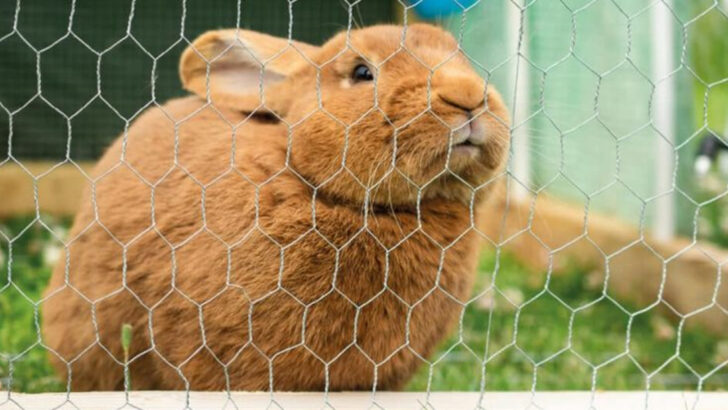Rabbits may look cute, but in your garden, they’re tiny, fluffy destroyers. They don’t nibble—they obliterate. Fresh shoots, tender greens, blooming flowers? Gone in a single sneaky visit. You spend weeks planting, watering, and dreaming. Then one hungry bunny wipes it all out overnight. And those “tricks” people swear by? Some are nothing more than wishful thinking. If you’re tired of playing defense and losing, it’s time to take control. There are methods that work—easy ones. And a few that sound clever but only waste your time and money. Let’s separate what protects your plants from what just gives you false hope. Your garden deserves better.
Install a Fence
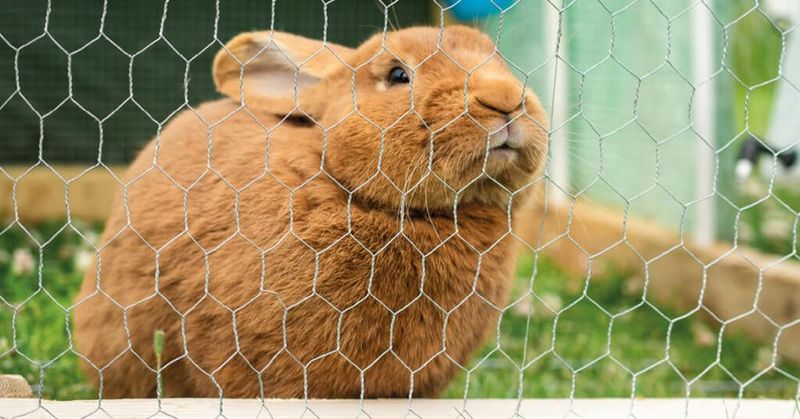
A sturdy fence can be your garden’s best friend against rabbits. Opt for a wire mesh that is at least 2 feet high and extends underground to prevent burrowing. This barrier is effective in deterring rabbits and other small animals. With a fence in place, your plants can thrive without the threat of being nibbled away. While it requires an upfront investment of time and resources, the peace of mind it offers is invaluable. For those committed to their gardens, fencing is a must-have solution.
Use Rabbit Repellents

Repellents offer a convenient way to keep rabbits at bay. These products often rely on scents that rabbits find unpleasant, such as garlic or hot pepper. Application is simple; just spray around the garden’s perimeter. Keep in mind, weather conditions like rain can diminish their effectiveness, requiring reapplication. For gardeners seeking an easy and quick solution, repellents can be part of a broader strategy. However, they work best in combination with other methods and regular reapplication is necessary for ongoing protection.
Plant Rabbit-Resistant Plants
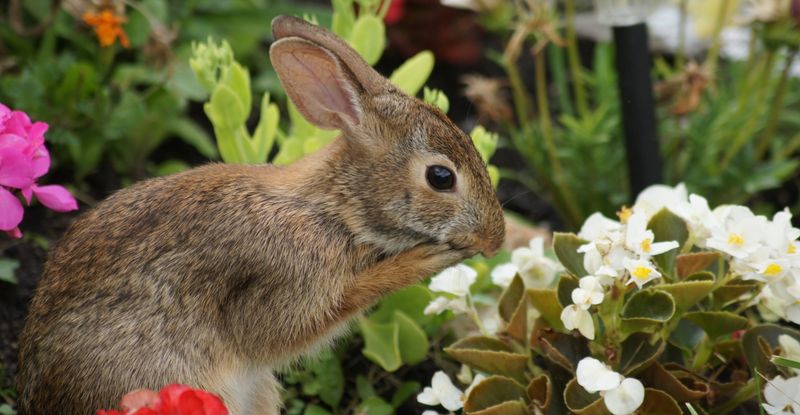
Some plants naturally deter rabbits due to their taste or smell. Marigolds, lavender, and rosemary are excellent choices that add beauty while warding off unwanted guests. These plants can be strategically placed around vulnerable areas to form a natural barrier. Besides their protective qualities, they bring aromatic and visual appeal to any garden. By integrating rabbit-resistant plants, gardeners can enjoy dual benefits: protection and aesthetics. This method is ideal for those seeking a harmonious blend of form and function.
Create a Raised Bed

Raised beds offer a dual advantage by elevating plants out of rabbits’ easy reach and improving soil conditions. Constructed from wood or stone, these beds should stand at least 18 inches high. Not only do they deter rabbits, but they also offer better drainage and soil composition control. Raised beds can transform a garden into a more manageable space, perfect for those with limited mobility. Additionally, they add an organized aesthetic to the landscape. For gardeners seeking efficiency and style, raised beds are a smart choice.
Install Motion-Activated Sprinklers

Motion-activated sprinklers surprise rabbits with sudden bursts of water, deterring them from entering. This method leverages technology to protect your plants without harming the animals. Installation is straightforward, and the sprinklers can be adjusted for range and sensitivity. While they require an initial investment, these devices are effective and low-maintenance. They work best in combination with other deterrents, providing a layered defense. For tech-savvy gardeners, motion-activated sprinklers offer an innovative solution.
Use Chicken Wire
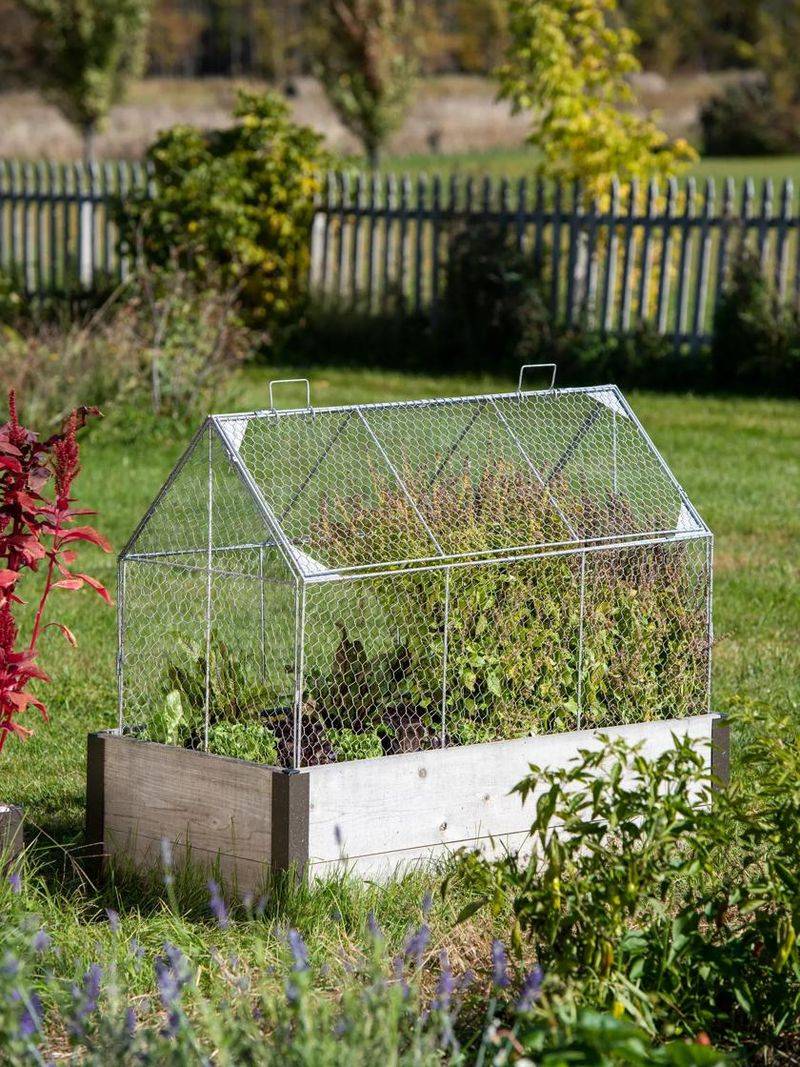
Chicken wire is a versatile material for rabbit-proofing your garden. It can be used to create cages around individual plants or entire sections. Ensure the wire is buried slightly underground to thwart digging. This solution is cost-effective and can be customized to fit various garden layouts. Despite its simplicity, chicken wire provides a reliable barrier against small animals. For those looking for an adaptable and inexpensive option, chicken wire is a great choice. Its flexibility in use makes it a favorite among many gardeners.
Implement Natural Predators
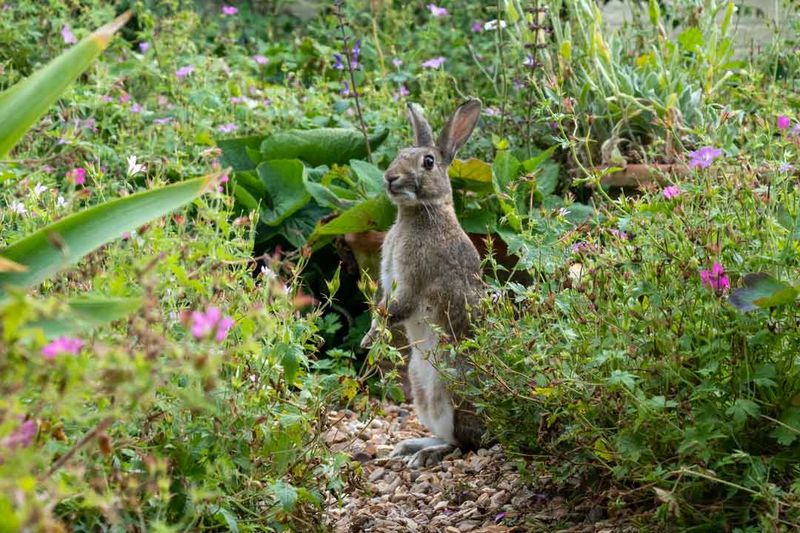
Encouraging natural predators, like owls or hawks, can keep rabbit populations in check. Installing decoys or encouraging predator-friendly environments can help. These animals help maintain ecological balance, benefiting not just your garden but the larger ecosystem. While not foolproof, the presence of predators can deter rabbits from venturing too close. This method works best alongside other deterrents, offering a more holistic approach to garden protection. For nature enthusiasts, this strategy aligns with sustainable gardening practices.
Apply Blood Meal
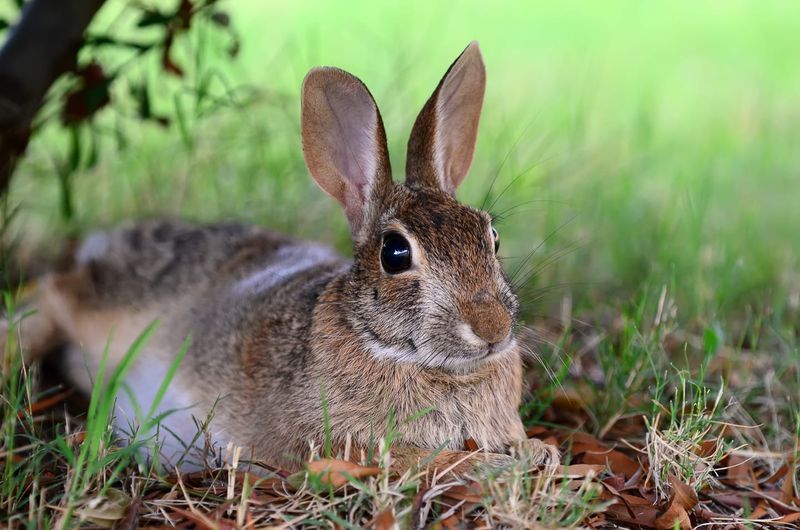
Blood meal, a byproduct of slaughterhouses, serves as an effective rabbit deterrent. Its strong smell discourages rabbits from approaching, while also enriching the soil with nitrogen. Application is simple: sprinkle around the garden’s edge or near vulnerable plants. While effective, its odor may attract other animals, so use with caution. This method is ideal for gardeners seeking a dual-purpose solution. By nourishing plants and deterring rabbits, blood meal offers a unique blend of benefits.
Use Row Covers

Row covers serve as a physical barrier, protecting seedlings from rabbits and other pests. Made from lightweight fabric, they allow sunlight and rain to reach plants while blocking out unwanted visitors. These covers are easy to install and can be adjusted as plants grow. Their versatility makes them suitable for various garden layouts. For those keen on maintaining plant health and aesthetics, row covers are a practical choice. This method offers peace of mind by ensuring your plants remain untouched.
Create a Distraction Garden

A distraction garden can lure rabbits away from your main plants by offering them an alternative. Plant rabbit favorites like clover or lettuce away from your primary garden area. This method leverages rabbits’ natural foraging habits, drawing them towards an easy meal. While not foolproof, it can reduce damage to your valued plants. For gardeners with ample space, a distraction garden can be an effective and humane way to coexist with wildlife. This strategy exemplifies creative problem-solving in garden management.
Sprinkle Human Hair
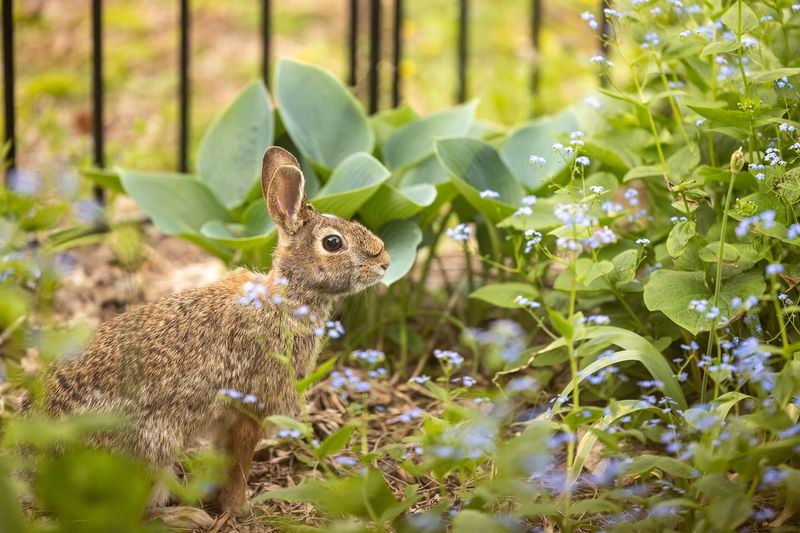
Human hair can act as a deterrent due to its unfamiliar scent to rabbits. Gather hair from hairbrushes or salons and scatter it around the garden’s perimeter. This method is cost-effective and utilizes readily available materials. While not the most reliable solution, it can be part of a broader strategy. For those seeking low-cost and eco-friendly options, hair offers an intriguing possibility. As a conversation starter, this method adds an unconventional twist to traditional garden protection.
Build a Rock Garden
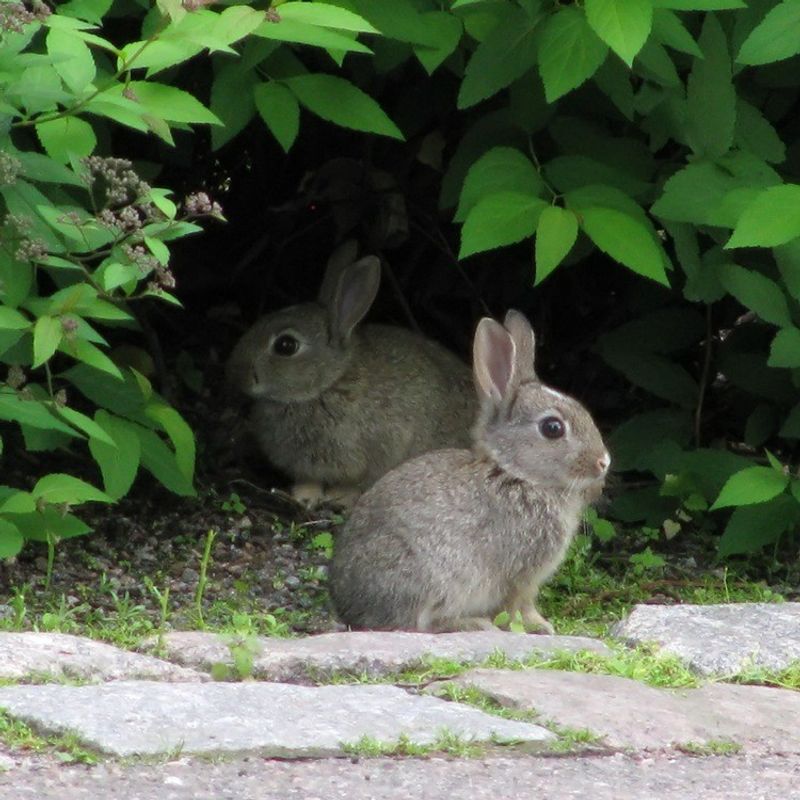
Rock gardens can serve as both a decorative feature and a rabbit deterrent. By using rocks to obscure access and create less appealing terrain, rabbits are less likely to intrude. This method adds texture and variety to the garden, enhancing its visual appeal. While not a standalone solution, rock gardens contribute to a multi-layered defense. For those interested in aesthetics and functionality, rock gardens offer a unique blend. The rugged beauty they provide complements traditional floral displays.
Install Raised Ponds

Raised ponds create physical barriers and add an element of tranquility to gardens. These structures elevate water features above rabbit reach, protecting aquatic plants. Besides being a deterrent, raised ponds enhance the garden’s ambiance and biodiversity. While they require planning and investment, the resulting ecosystem enriches the garden’s appeal. For gardeners looking to integrate water features while protecting flora, raised ponds present a compelling option. Their dual function serves both practical and decorative purposes.
Ultrasonic Repellent Devices
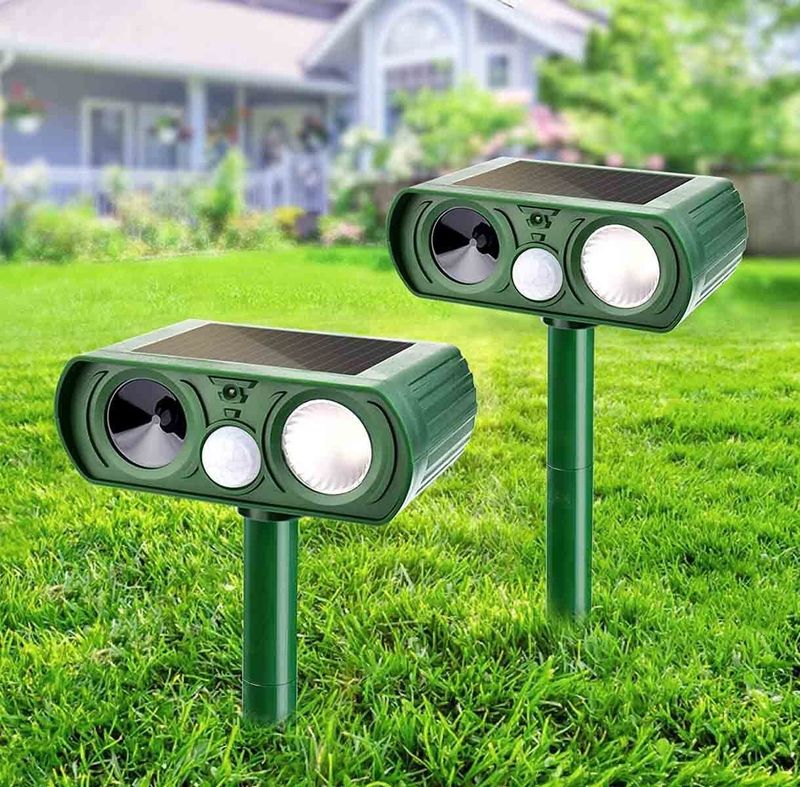
Ultrasonic devices emit high-frequency sounds that deter rabbits without harming them. These sounds are inaudible to humans and most pets, making them neighbor-friendly. Installation is simple, requiring minimal maintenance after placement. While effective, they should be used alongside other deterrents for best results. Ideal for tech-savvy gardeners, ultrasonic devices offer a modern solution to age-old pest problems. Their discreet nature ensures they don’t disrupt the garden’s aesthetic. This method blends innovation with practicality.
Plant Thorny Bushes

Thorny bushes provide a natural barrier, discouraging rabbits from venturing further into the garden. Species like holly or rose bushes can protect perimeters while adding beauty. These plants require minimal maintenance once established, making them a durable option. While they serve primarily as a deterrent, they also contribute to the garden’s diversity. For those looking for a natural and aesthetic solution, thorny bushes offer a practical choice. Their dual role as protector and beautifier cannot be understated.
Overcome with Scented Oils
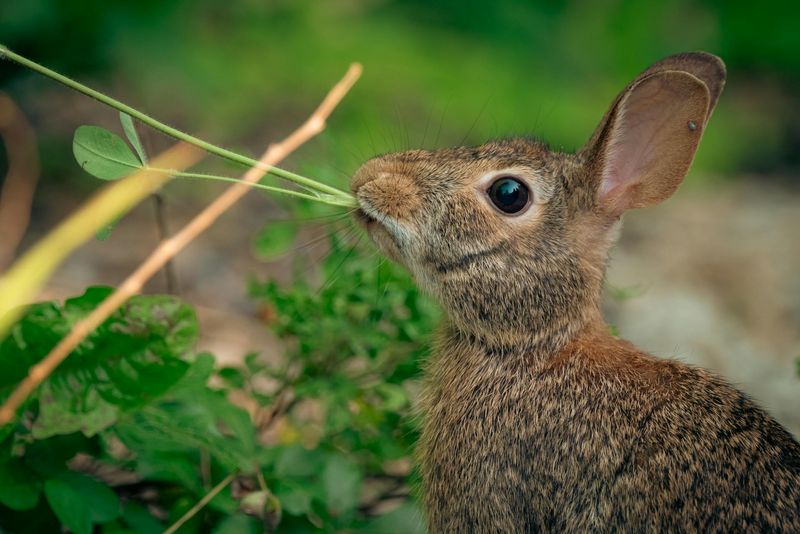
Essential oils like peppermint or eucalyptus can repel rabbits with their strong scents. Apply these oils to cotton balls placed strategically around the garden. This method is both natural and humane, avoiding harm to the animals. While effective, the oils may require frequent reapplication, especially after rain. For gardeners seeking an aromatic and gentle solution, scented oils offer a delightful option. Their integration into garden maintenance adds a sensory dimension to pest control.
Avoid Plastic Owls and Snakes

Plastic owls and snakes are often touted as deterrents but tend to lose effectiveness quickly. Rabbits can become accustomed to these static figures, rendering them useless. While inexpensive, their return on investment is minimal, often serving more as decoration than protection. For those tempted by their low cost, it’s wise to reconsider. Better results come from dynamic and multi-faceted approaches. In the realm of garden protection, static decoys are often more about aesthetics than functionality.

